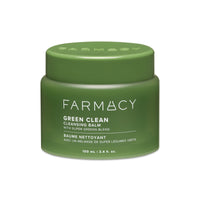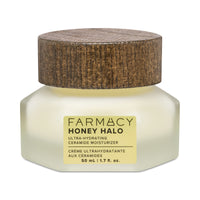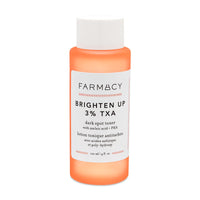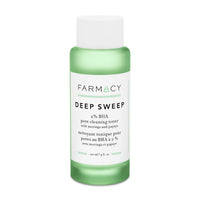Niacinamide for Skin: Benefits, How to Use, and Best Ingredient Pairings

What Is Niacinamide and Why Is It Trending in Skincare?
Niacinamide, also known as vitamin B3, is a water-soluble vitamin praised for its soothing, balancing, and restorative properties. It’s suitable for nearly all skin types and is found in a wide range ofskincare products, such as serums, moisturizers, and masks.
Unlike more aggressive active ingredients, niacinamide is well-tolerated by most users, making it a favorite among dermatologists and skincare enthusiasts. Its multifunctional nature means it can help address oiliness, dryness, discoloration, and even signs of aging.
Niacinamide as an Antioxidant
Beyond hydration and skin tone, niacinamide acts as a powerful antioxidant. That means it helps shield the skin from daily environmental stressors like pollution, UV rays, and free radicals, which can accelerate visible aging and dullness. By supporting the skin’s natural defenses, niacinamide helps your complexion stay resilient, radiant, and youthful.
Top 7 Benefits of Niacinamide for Skin

Niacinamide is a true multitasker. Here’s what consistent use ofniacinamide skincare products can do for your skin:
1. Minimizes the Appearance of Pores
Niacinamide helps balance oil production, visibly reducing the appearance of enlarged pores over time.
2. Reduces Redness and Irritation
Known for its anti-inflammatory properties, niacinamide soothes blotchiness and is often recommended for acne-prone or sensitive skin types.
3. Evens Skin Tone
Regular use of niacinamide may help fade dark spots and discoloration for a brighter, more even-toned complexion.
4. Strengthens the Skin Barrier
Niacinamide supports the skin’s barrier by encouraging ceramide production, which helps retain moisture and defend against external stressors. A healthy skin barrier is essential for soft, hydrated, and irritation-free skin. If your skin often feels dry, tight, or reactive, niacinamide can help restore comfort and balance.
5. Softens Fine Lines
While not replacing retinol, niacinamide complements anti-aging routines by supporting collagen and improving elasticity.
6. Boosts Hydration
Niacinamide locks in moisture and works synergistically with hydrating ingredients like hyaluronic acid for supple, nourished skin.
7. Helps Control Breakouts
Its oil-regulating and calming properties make niacinamide a go-to for those managing acne or congestion.
Niacinamide is an all-in-one ingredient that supports clearer, calmer, and more youthful-looking skin.
Who Should Use Niacinamide?
Niacinamide is suitable for nearly all skin types:
-
Oily skin: Helps balance sebum and reduce breakouts.
-
Dry or sensitive skin: Supports hydration and calms redness.
-
Mature skin: Softens fine lines and improves resilience.
-
Combination skin: Targets multiple concerns without irritation.
Niacinamide is also gentle enough for sensitive, redness-prone, eczema-prone, or rosacea-prone skin. Its calming and barrier-strengthening effects make it a smart choice for anyone who typically reacts to stronger actives.
Who Should Not Use Niacinamide?
While rare, people with a known allergy to vitamin B3 or those who have experienced reactions to niacinamide should consult a dermatologist before use. Always patch test new products if you have highly reactive or allergy-prone skin!
How to Use Niacinamide in Your Routine (Morning & Night)
Here’s how to incorporate niacinamide into your daily routine for best results
|
Time of Day |
Step |
Product Suggestion |
How to Use |
|
AM |
After Cleansing |
Apply to a clean face and follow with SPF |
|
|
PM |
Final Step |
Apply as an overnight treatment on clean skin |
Pro Tip: Allow each layer to absorb for 30–60 seconds before applying the next product. To level up your routine, apply a niacinamide serum before your moisturizer for an extra boost.
How Long Until I See Results?
Most users report visible changes in 2–4 weeks with consistent use. Studies suggest that benefits like brighter skin, improved texture, and softened fine lines become more noticeable after 8 to 12 weeks.
What Can You Mix with Niacinamide? (And What You Shouldn’t)
One great thing about niacinamide is that it plays nicely with most other skincare ingredients, so you don’t have to overhaul your regimen to add niacinamide! Even better, niacinamide often enhances the effects of the skincare products you're already using. Here are a few popular ingredient pairings and how niacinamide works with each:



Niacinamide Ingredient Compatibility Guide
|
Ingredient |
Can You Use Together? |
Notes |
|
Hyaluronic Acid |
Yes |
Boosts hydration; layer in any order |
|
Vitamin C |
Yes (with care) |
Apply vitamin C first, then niacinamide |
|
Retinol |
Yes |
Niacinamide helps reduce irritation |
|
AHAs/BHAs (e.g., glycolic, salicylic acid) |
Yes (monitor sensitivity) |
Use together if tolerated; start slowly |
|
Ceramides |
Yes |
Both support barrier repair |
|
Peptides |
Yes |
Complementary to anti-aging |
|
Benzoyl Peroxide |
Yes (monitor dryness) |
Use moisturizer to prevent dryness |
|
SPF |
Yes |
Apply SPF as the final step in the AM routine |
|
Oils |
Yes |
Layer after water-based serums |
|
Prescription Actives (e.g., tretinoin) |
Yes (with care) |
Introduce slowly; monitor for irritation |
Pairs Well With:
-
Niacinamide and Salicylic Acid (BHA):Targets acne and blackheads; niacinamide soothes and balances.
-
Niacinamide and AHAs (like glycolic acid): Exfoliates for better absorption; niacinamide prevents irritation.
-
Niacinamide and Retinol: Niacinamide reduces the dryness and redness often associated with retinol.
-
Niacinamide and Hyaluronic Acid: These two together keep skin plump and well-hydrated.
-
Niacinamide and Vitamin C:Contrary to outdated myths, they can be used in the same routine or layered with a short wait time.
Use With Caution:
-
If you have very sensitive skin, monitor how you react when combining niacinamide with multiple actives, and always introduce one product at a time.
Are There Any Side Effects? How to Patch Test
Niacinamide is considered very gentle, but as with any skincare ingredient, a few people may experience mild irritation, redness, or itching, especially at higher concentrations or when using multiple actives at once. To be safe, do a patch test:
-
Apply a small amount of product to your inner forearm.
-
Wait 24–48 hours.
-
If you notice any redness, swelling, or discomfort, discontinue use.
Topical vs. Oral Niacinamide
For skincare benefits like brightening, hydration, and calming, topical niacinamide (in serums, creams, or masks) is the best choice. While niacinamide is an important vitamin for overall health, taking supplements won’t target skin concerns as effectively as applying it directly to your skin.
Farmacy Favorites with Niacinamide

-
Farmacy 10% Niacinamide Night Mask: A potent leave-on night mask that visibly improves texture and refines pores for a renewed, even-looking complexion
-
Farmacy Daily Greens Gel Moisturizer:This lightweight, oil-free daily moisturizer combats shine and balances oil for long-lasting hydration.
Final Thoughts: Is Niacinamide Right for You?
If you're seeking clearer, calmer, more balanced skin, niacinamide is a smart, dermatologist-loved addition to your daily skincare regimen. Niacinamide’s ability to multitask by minimizing pores, calming irritation, and improving tone and texture makes it a reliable choice whether you’re just starting a skincare routine or upgrading your current one.
Discover Farmacy’s gentle, effectiveniacinamide skincare products and reveal your healthiest, most radiant skin yet.
#FarmacyBeauty
Shop our instagram feed @farmacybeauty





